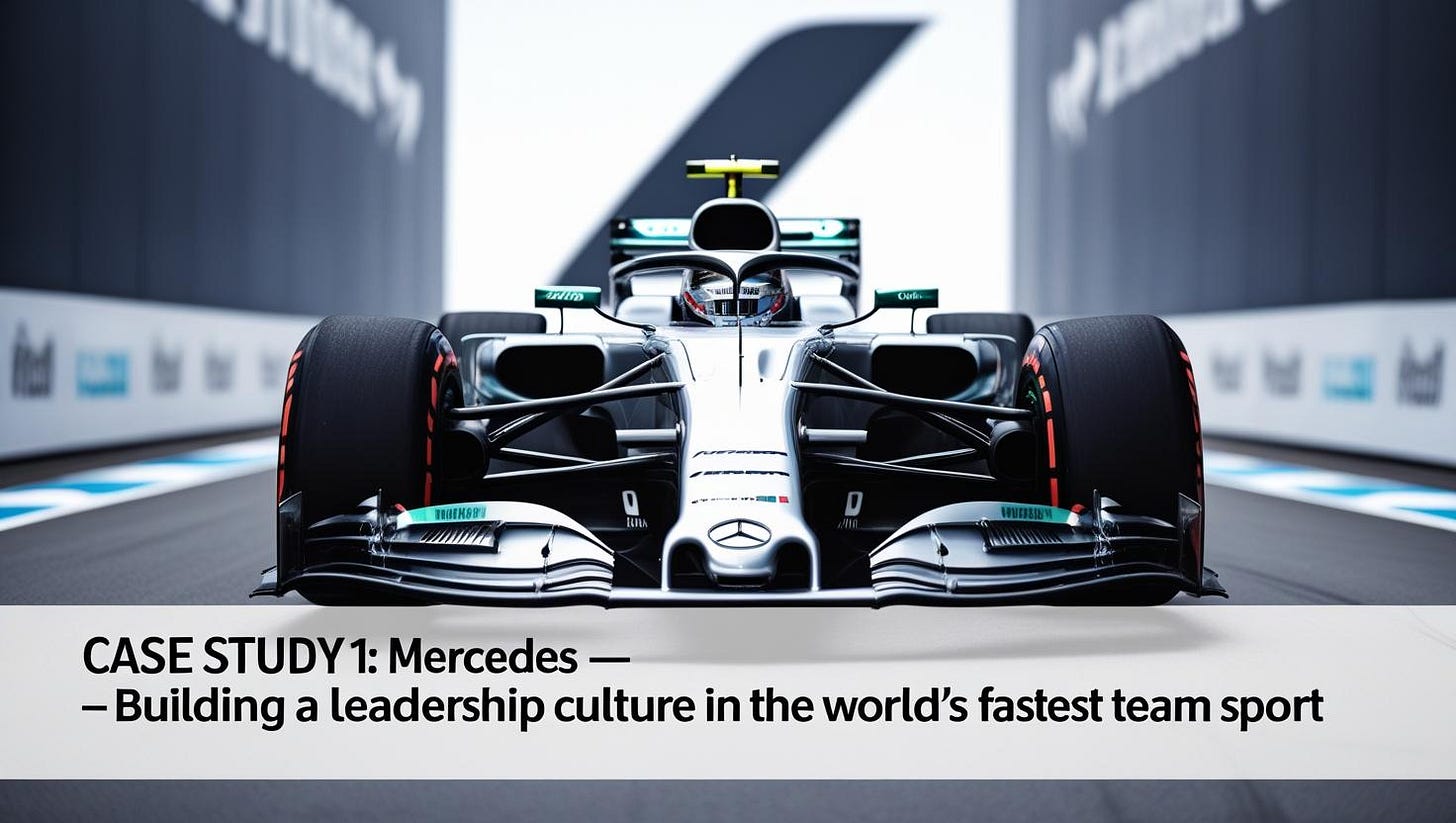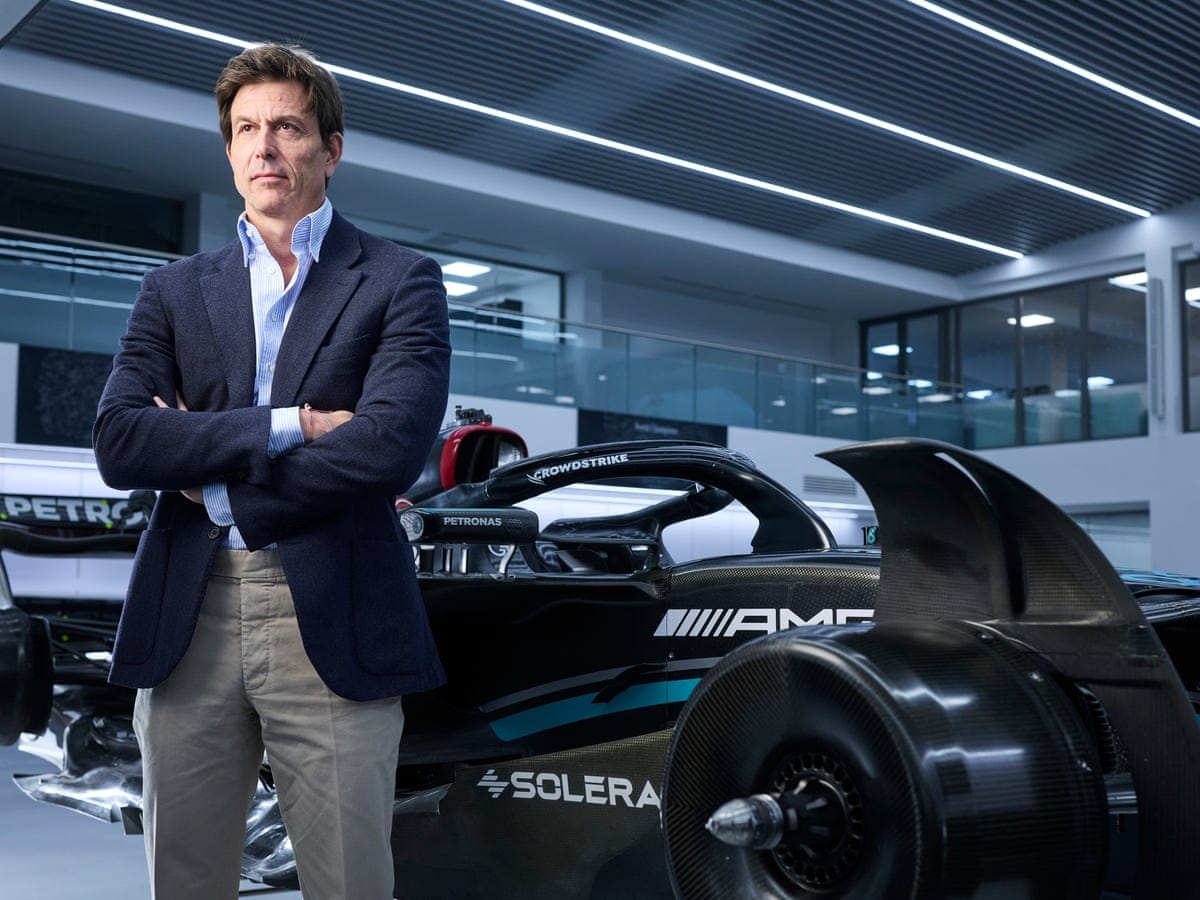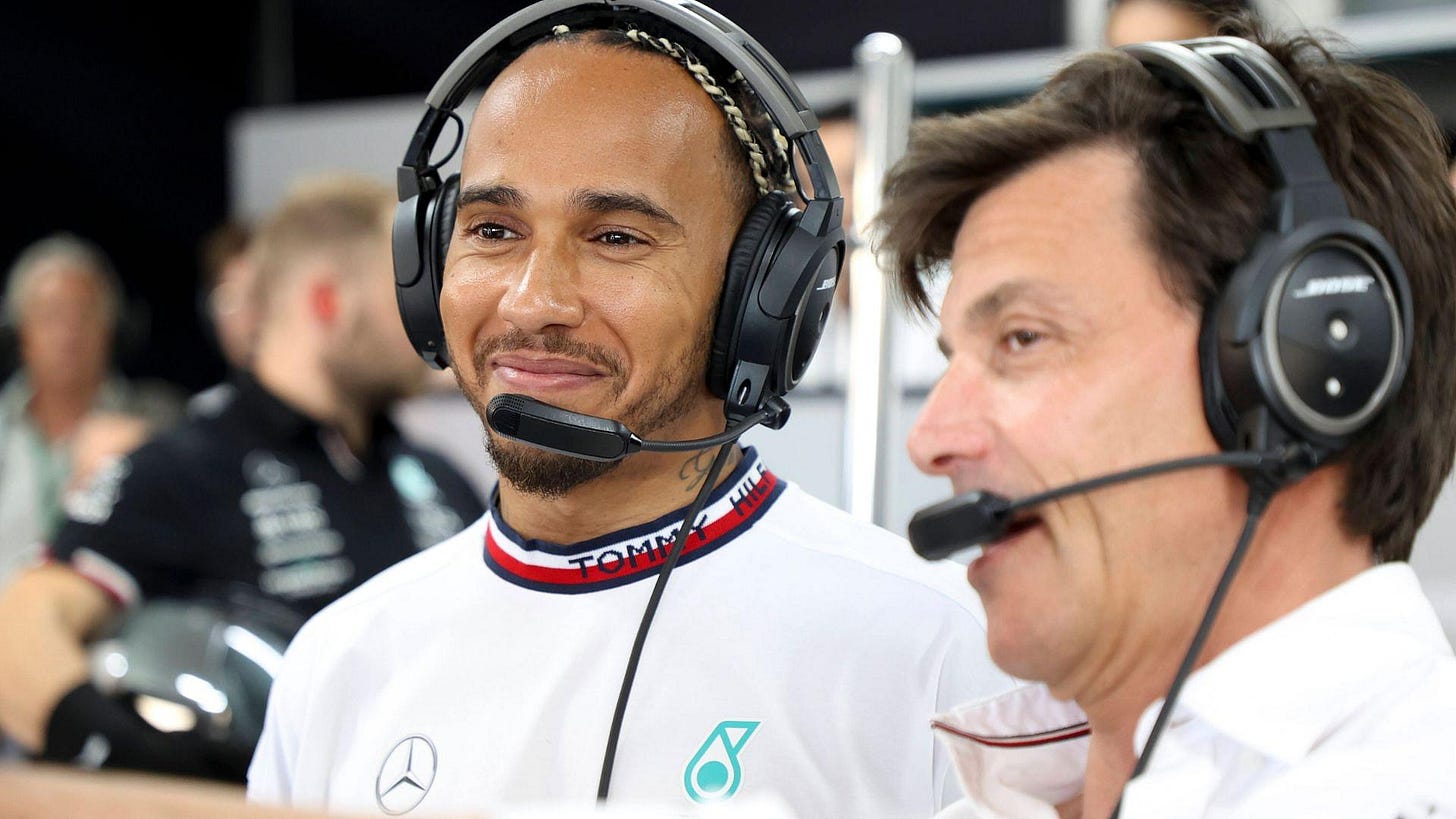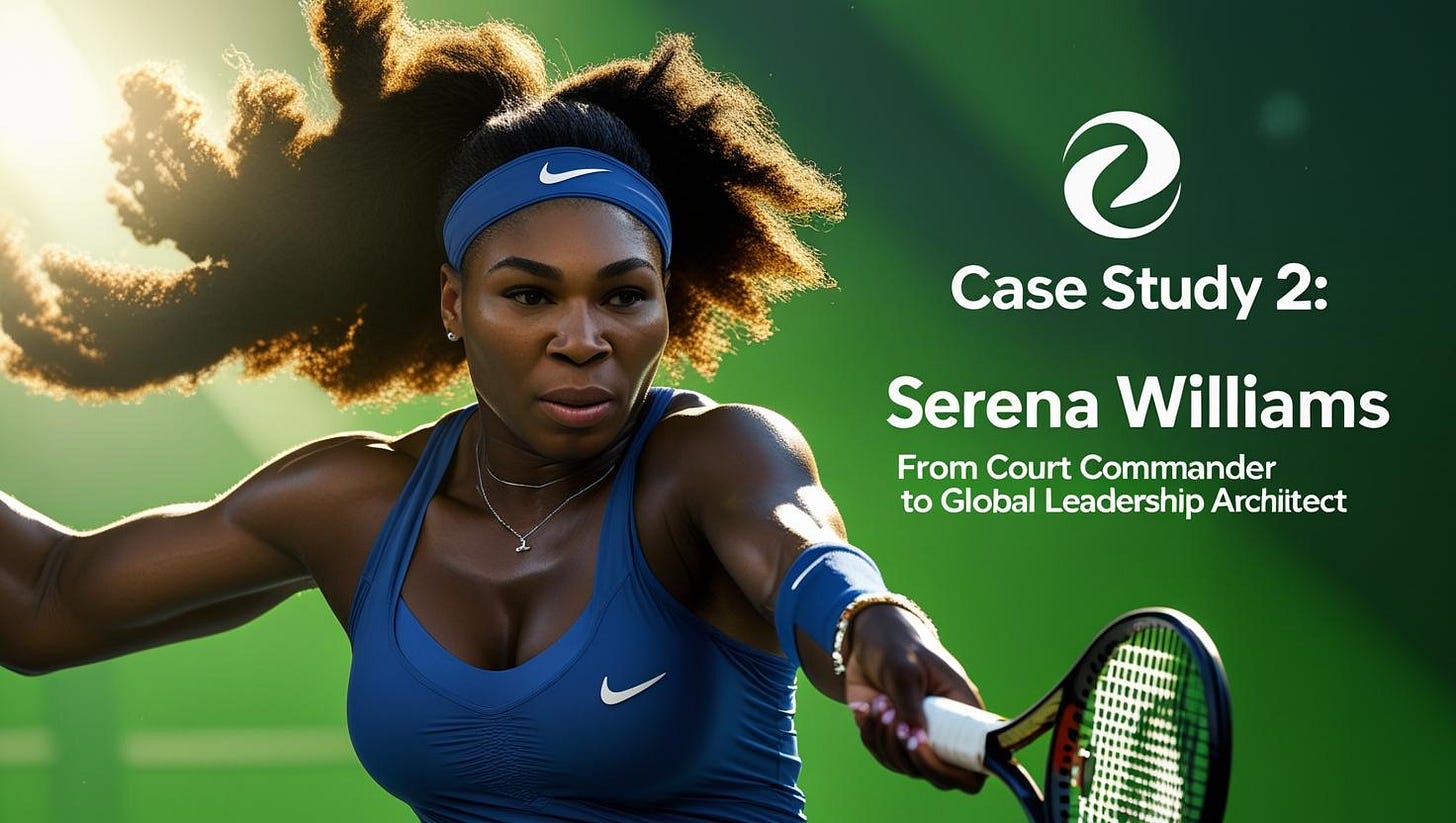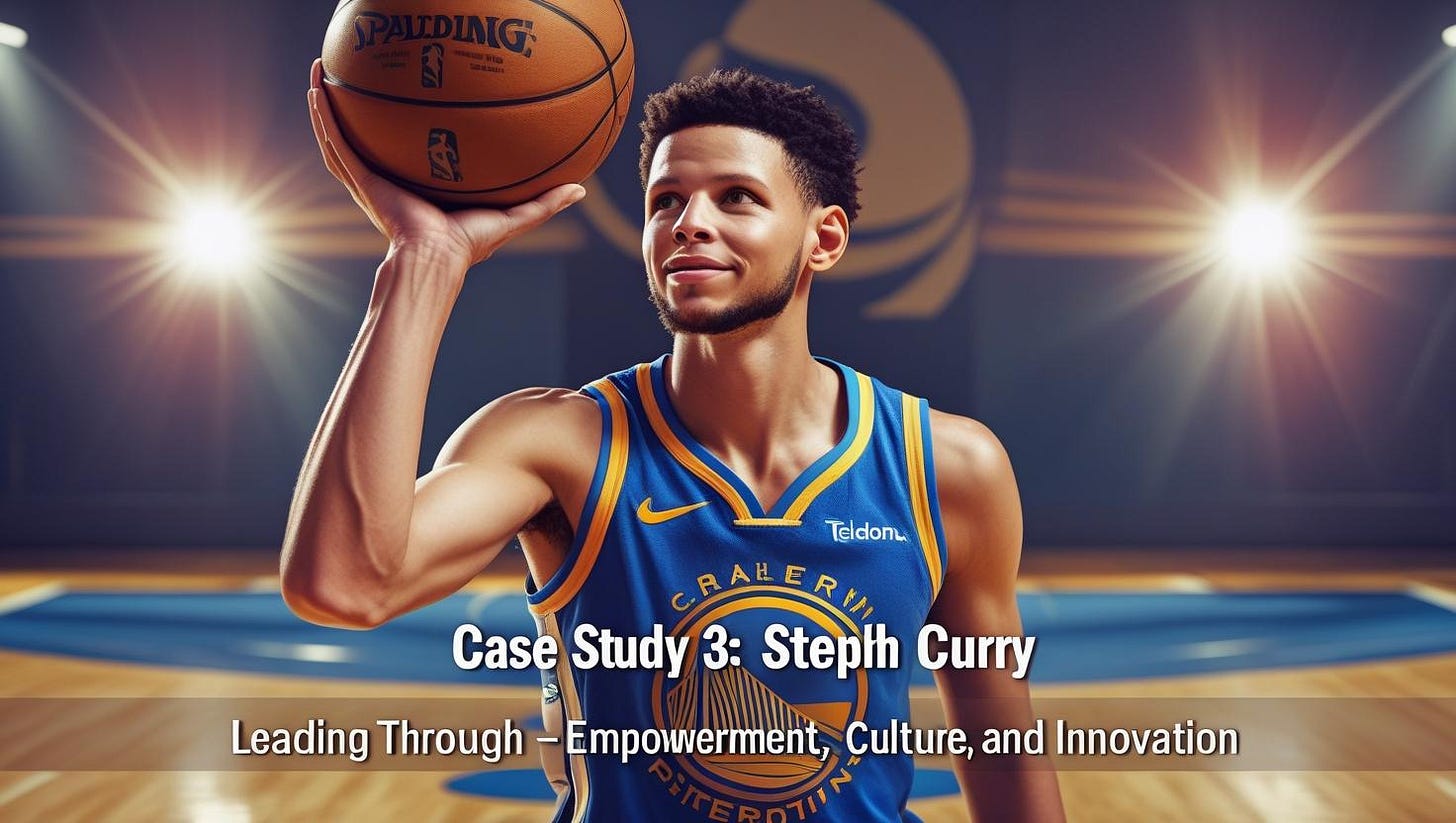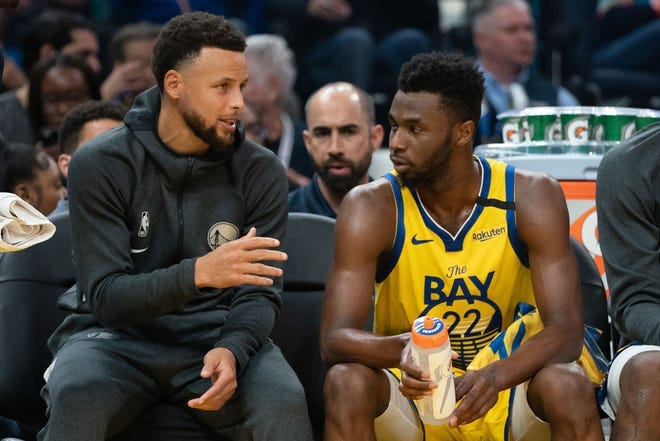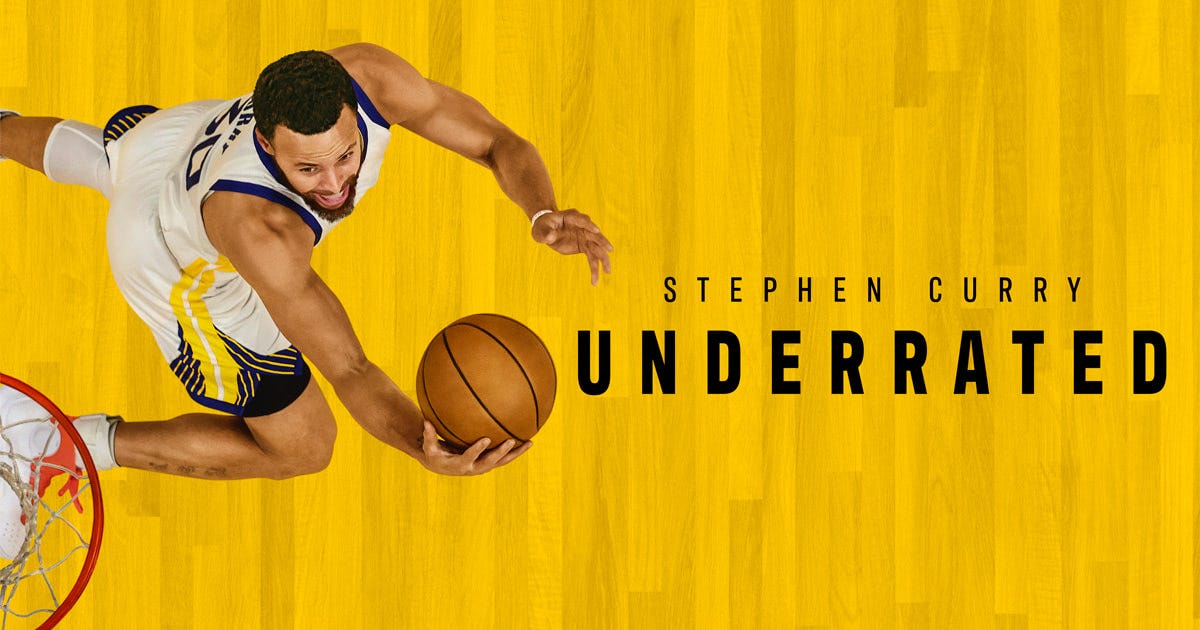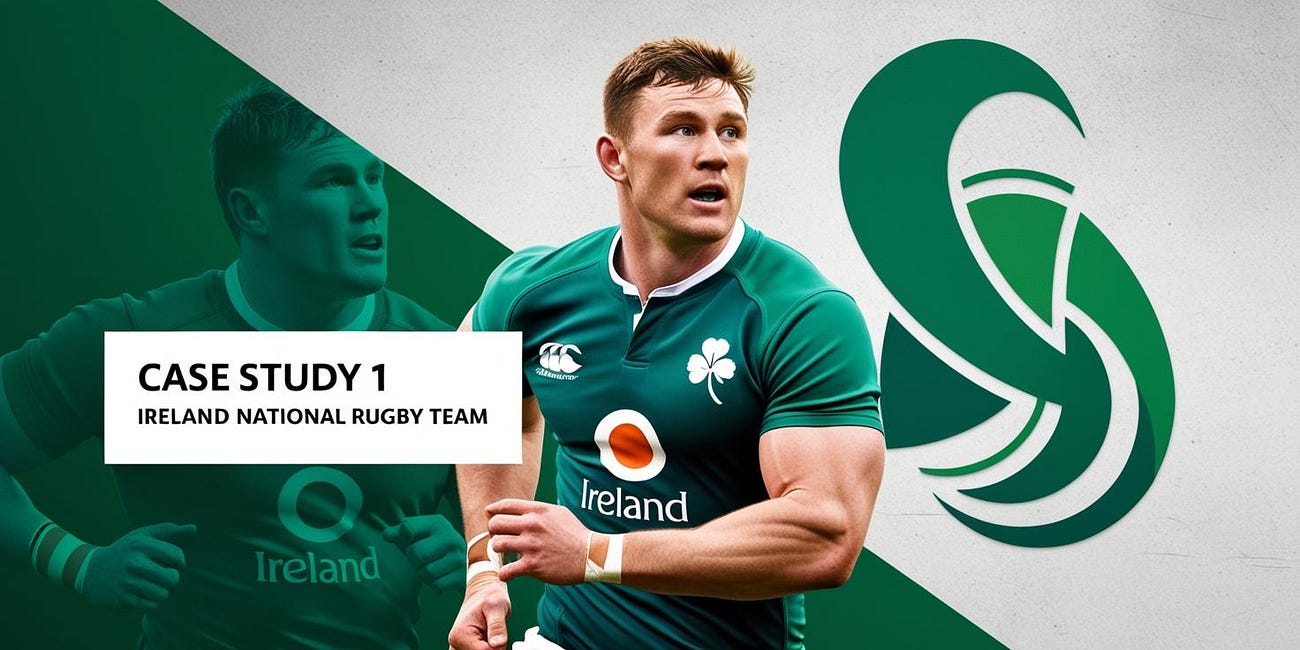3 Upside Case Studies: Leadership Skills Development: (1) Mercedes-AMG Petronas Formula 1 Team, (2) Serena Williams, (3) Steph Curry
🏎️ Case Study 1: Mercedes-AMG Petronas Formula 1 Team — Building a Leadership Culture in the World’s Fastest Team Sport
Introduction
Formula 1 is a sport where technical precision, real-time decision-making, and psychological resilience must all function at the highest level—under the pressure of a global audience and a race calendar that spans continents. Amid this intensity, the Mercedes-AMG Petronas F1 Team, led by Toto Wolff, has become a global case study in systematizing leadership development. Far beyond just the driver’s cockpit, Mercedes built a culture that prioritizes collective leadership, cross-functional learning, radical accountability, and psychological safety.
Their rise to dominance—winning seven consecutive Constructors’ Championships (2014–2020) and six Drivers’ Championships with Lewis Hamilton—was not only the result of aerodynamic engineering and race strategy but a direct outcome of their internal leadership framework. In a sport with extreme turnover and technical volatility, Mercedes built continuity, trust, and excellence by redefining what it means to lead in every role.
Method & Result
Method
Toto Wolff implemented what he often refers to as a "no-blame culture," where errors are treated as learning opportunities, and transparency is not just encouraged but expected. To operationalize this:
Structured Debriefs and Open Forums: After every race, Mercedes holds full-team debriefs where any employee—regardless of seniority—can question decisions, offer insights, or challenge assumptions. This flattens the hierarchy and reinforces the idea that leadership is about contribution, not title.
Leadership Development for Technical Teams: Engineers, pit crew members, and data analysts undergo personal development programs, receive emotional intelligence training, and are encouraged to rotate through roles to build empathy and a broader view of the team’s function. Leadership rotations are used even at the highest levels of engineering.
Driver-Led Mentorship: Lewis Hamilton plays an active role in mentoring junior engineers, strategists, and even simulator drivers. He regularly visits the factory, shares feedback, and co-designs solutions with staff. This shifts the team from being “driver-dependent” to “driver-embedded”—a key cultural difference.
Radical Transparency: Performance failures are addressed publicly within the team without personal attack. Wolff himself frequently takes accountability in front of the media, modeling vulnerability and shielding junior staff from blame.
Result
Mercedes’ leadership structure allowed them to maintain technical dominance, manage innovation risk, and respond in real-time to competition from Red Bull and Ferrari.
Even during the post-2021 regulatory changes and competitive dip, the culture of open communication helped Mercedes remain cohesive, with few staff exits compared to other teams.
Lewis Hamilton’s growth into a vocal advocate for racial equity and mental health reflects the team’s support of leadership beyond sport, which also attracts top-tier talent and sponsors.
Their off-track success is now being studied by McKinsey, Harvard, and Wharton as a corporate leadership case study, particularly in handling high-performance teams under stress.
Lessons Learned
Psychological safety is foundational—especially in high-stakes environments where mistakes are inevitable. It turns setbacks into accelerators.
Leadership development must extend beyond traditional roles. Engineers and operators can become culture-setters if given the training and opportunity.
Transparency and humility from the top set the tone. Toto Wolff’s willingness to take blame empowers others to speak up and lead.
Cross-functional learning cultivates depth and adaptability. By rotating staff and encouraging feedback from all corners, Mercedes creates more agile decision-makers.
True performance comes from shared ownership—a principle Mercedes lives from pit wall to driver’s seat to simulator room.
🎾 Case Study 2: Serena Williams — From Court Commander to Global Leadership Architect
Introduction
Serena Williams is widely recognized as one of the most dominant athletes of all time, with 23 Grand Slam singles titles and an unmatched career that reshaped tennis. But Serena’s greatest legacy may not be the trophies—it's how she used her platform to cultivate multi-dimensional leadership, both for herself and for others.
Serena didn’t just lead on the court. She built bridges into entrepreneurship, activism, and investment—fields where few women of color are represented at scale. Her evolution from a young tennis prodigy into a global leadership catalyst illustrates how personal excellence can become a foundation for collective empowerment.
Method & Result
Method
Serena’s leadership development model extends across three integrated arenas:
Athletic Leadership & Mentorship
Serena was never just a competitor—she was a cultural force in the locker room. She frequently mentored younger players, offered media advice, and navigated high-profile controversies with grace and assertiveness.
She was also a public advocate for fair treatment of women in tennis (e.g., speaking out against penalties for attire or emotional expression) and racial equity (e.g., calling out disparities in how Black athletes are portrayed in the media).
Venture Leadership through Serena Ventures
In 2014, she launched Serena Ventures, and in 2022, she revealed a $111M early-stage VC fund focused on underrepresented founders, especially women and Black entrepreneurs.
Serena doesn’t just invest capital—she provides coaching on confidence, visibility, and resilience. She insists on inclusion on cap tables, helps founders build boards, and promotes a vision of long-term wealth creation.
Cultural Leadership & Storytelling
Serena has become a voice in global forums on motherhood, health equity (after her near-death birth experience), and entrepreneurship.
Through documentaries, books, speaking engagements, and fashion partnerships, she models vulnerable yet powerful leadership—an antidote to the traditional “stoic hero” archetype.
Result
Serena Ventures has invested in 60+ companies including Tonal, MasterClass, Noom, and Karat—many of which are now unicorns or fast-growing startups.
Her leadership style—anchored in authenticity, equity, and courage—has influenced how female athletes across sports see their post-career possibilities.
In 2022 and 2023, Serena was ranked among the most influential women in business by Fast Company and Forbes.
She helped mainstream the idea that athletes can be VCs, operators, and culture-builders, paving the way for Naomi Osaka, Steph Curry, and Angel Reese to follow similar paths.
Lessons Learned
Elite performance creates leadership capital—but it must be reinvested. Serena turned fame into infrastructure.
Leadership is scalable across arenas—from courts to cap tables to public advocacy—if rooted in clarity of mission.
Mentorship is a leadership force multiplier. Serena’s influence goes far beyond her own wins—it's in the founders she backs and the players she lifts.
Authenticity and vulnerability are strengths. Her openness about health, race, and motherhood changed the narrative around what leadership looks like for women of color.
Modern leaders are ecosystems. Serena built platforms (funds, media, partnerships) that extend her impact across industries—an essential lesson for athletes, founders, and institutions alike.
🏀 Case Study 3: Steph Curry — Leading Through Empowerment, Culture, and Innovation
Introduction
Stephen Curry is far more than a transformational basketball player—he’s one of the most effective and influential modern leaders in sports, business, and social impact. Known for revolutionizing the NBA with his shooting range and unselfish style, Curry has simultaneously built a leadership identity rooted in humility, emotional intelligence, personal discipline, and empowerment of others.
Picture: Steph Curry
Curry’s leadership has propelled the Golden State Warriors to four NBA titles (2015, 2017, 2018, 2022), helping transform the franchise from a struggling team into a dynasty. Off the court, he’s equally committed to leadership development through Curry Brand, Underrated, and his strategic investments in companies and causes focused on equity, education, and youth leadership. What sets Curry apart is that he leads not through volume, but through vision and values.
Method & Result
Method
Curry’s leadership model can be broken into four key dimensions:
Team Leadership Through Culture and Consistency
Curry is a culture-setter in the Warriors’ locker room. While not the loudest voice, his relentless work ethic, unselfish play, and emotional steadiness have established a high-trust, low-ego environment that encourages development.
He gives younger players freedom to make mistakes and visibly celebrates their growth. From Jordan Poole to Jonathan Kuminga, many young Warriors cite Curry as their on-court and off-court mentor.
He leads by example: arriving early, staying late, studying film meticulously—even when he was already the MVP.
Institutional Leadership with the Warriors
Curry collaborates with the coaching and performance staff to shape team culture. He’s actively involved in conversations around rest, training, and leadership development.
He endorsed and helped build out the Warriors’ player development staff and off-court leadership programs—helping sustain long-term competitiveness.
3. External Leadership: Underrated and Curry Brand
In 2019, Curry launched Underrated, a brand and tournament platform to provide visibility, scholarships, and coaching to overlooked high school athletes—especially those not ranked in traditional scouting systems.
Curry Brand (under Armour) was positioned not just as an athletic apparel brand but as a leadership pipeline—focusing on community, inclusion, and high-character development. Every pair of shoes or grant carries a message about discipline, resilience, and integrity.
4. Investment in Leadership Through Entrepreneurship
Curry co-founded Unanimous Media, a content company focused on family-friendly, socially relevant storytelling.
His investments include Tonal, Guild Education, OXIGEN, and TSM (esports)—companies where he’s not just a brand face but an active partner in shaping culture, product, and social impact.
He also launched The Players Technology Summit, co-hosted with Andre Iguodala, where athletes, founders, and investors gather to discuss leadership in innovation and tech.
Result
On the court, Curry has helped create a self-sustaining culture of development within the Warriors—where bench players often outperform expectations due to trust, communication, and accountability.
Off the court, Underrated has become a launching pad for dozens of young athletes into college programs, while Curry Brand has built playgrounds and funded programs in underserved communities across the U.S.
Curry’s brand of low-ego, values-first leadership has become a template for younger stars like Jayson Tatum and Shai Gilgeous-Alexander, who emulate his calm, strategic influence.
In 2022, Curry was named Sports Illustrated’s Sportsperson of the Year, not just for his Finals MVP performance, but for his influence across youth leadership, entrepreneurship, and social change.
Lessons Learned
Sustained excellence creates credibility—but character sustains leadership. Curry’s consistency, humility, and unselfishness have made him a trusted leader in every domain.
Empowerment over control creates long-term cultural strength. By letting others shine and mentoring without ego, Curry fosters independence and resilience in teammates.
Leadership can scale across ecosystems. From locker rooms to boardrooms to neighborhoods, Curry’s approach is cohesive and consistent.
Visibility matters for the overlooked. Through Underrated, Curry transforms his own origin story (3-star recruit, small college) into a leadership pipeline for others.
Leaders need to build platforms, not just moments. Whether in business or sport, Curry’s efforts are systemic—not performative. His leadership is baked into infrastructure, brand, and storytelling.
You may also like:
📚 Upside Special Report: Leadership Skills Development - 3 Case Studies: The Golden State Warriors (NBA), Kansas City Chiefs (NFL), Manchester City FC (Premier League)
Golden State Warriors (NBA): Building a Dynasty Through Leadership Development

